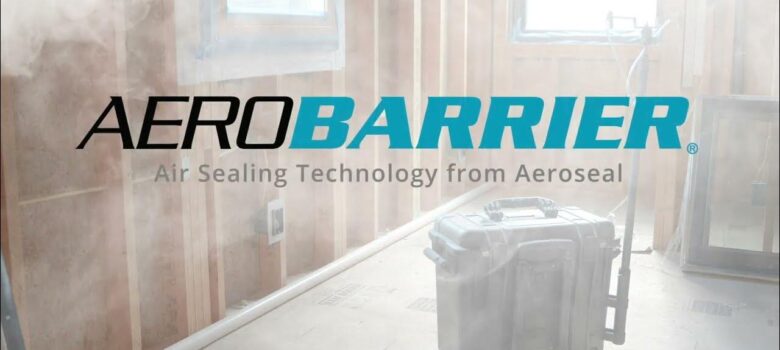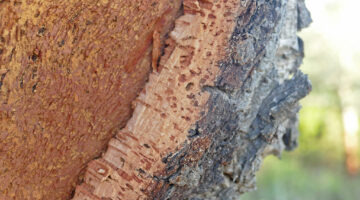
AeroBarrier is an innovative technology designed to enhance airtightness. It has been successfully implemented in the USA, Canada, and the UAE, and has now been introduced in the UK.
AeroBarrier functions by sealing air leaks in buildings with a specific mist that consists of tiny particles that form an airtight barrier. This mist is spread inside the building, and as it moves, it detects and seals any openings or leaks in the building’s structure. The mist particles are driven by air pressure and accumulate to form a continuous seal, effectively blocking unwanted airflow.
AeroBarrier guarantees its efficacy up to a certain level of airtightness, either aligning with the UK building standard of 8 m3/hr.m2 or the Passivhaus standards of 0.6 m3/hm3.
Why is controlling airflow in a home important?
Airflow is essential in maintaining a healthy and energy-efficient home. It can be divided into two categories: intentional and unintentional airflow.
Intentional Airflow:
Intentional airflow is designed to provide ventilation to the interior of a home. This is a critical aspect of maintaining indoor air quality. Ventilation helps to:
- Bring in fresh air: Homes need a constant supply of fresh air for the occupants to breathe. This fresh air replaces indoor air that has been depleted of oxygen and accumulated pollutants, odours, and moisture.
- Remove pollutants: Everyday activities like cooking, cleaning, and even breathing release pollutants into the indoor air. Intentional airflow through ventilation systems helps remove these pollutants, preventing them from reaching harmful concentrations.
- Control humidity: Moisture is continuously produced inside a home through activities like cooking, bathing, and breathing. Too much humidity can lead to condensation and mould growth, while too little can cause discomfort and health issues. A proper ventilation system balances humidity levels by expelling moist indoor air and bringing in drier outdoor air.
Unintentional Airflow:
Unintentional airflow, or air leakage, happens when outside air enters and conditioned air leaves your house uncontrollably through cracks and openings. These can occur around windows, doors, electrical outlets, plumbing points, and where the structure is not entirely airtight. Unintentional airflow can lead to several issues:
- Energy loss: When heated or cooled air escapes the home, or when outside air infiltrates, the HVAC system has to work harder to maintain the desired indoor temperature. This increased workload leads to higher energy consumption and utility bills.
- Decreased indoor air quality: Air leaks can allow outdoor pollutants like dust, pollen, and car exhaust to enter the home. They can also create pressure imbalances that draw pollutants from the attic, basement, or crawl spaces into the living areas.
- Compromised thermal comfort: Air leaks can cause drafts and uneven temperatures, leading to discomfort despite your HVAC system’s best efforts.
Airflow Management in Homes:
There are several strategies homeowners can use to manage airflow effectively:
- Air sealing: This involves identifying and sealing the places where air leaks are likely to occur, using caulk, spray foam, weatherstripping, or other suitable materials.
- Insulation: Insulation not only prevents heat transfer through the building envelope but can also help control air movement, especially when it’s installed in conjunction with an air barrier.
- Mechanical ventilation: While air sealing and insulation can reduce air leaks, they also reduce the home’s natural ventilation. Thus, most energy-efficient homes require a mechanical ventilation system to provide controlled ventilation without energy loss.
- Air filters: Good quality air filters in your HVAC system can help remove airborne pollutants and improve your home’s indoor air quality.
- Regular maintenance: Regular checks and necessary repairs of all elements contributing to the airflow in the house are key to ensuring optimal performance.
By combining these strategies, homeowners can control airflow in their homes, improving comfort, indoor air quality, and energy efficiency.
What are the building airtightness regulations?
In the last year, new building regulations have been put in place in England and Wales to enhance the requirements for airtightness in new constructions.
These regulations have reduced the air permeability limit in new buildings from 10 m3/hr.m2 to 8 m3/hr.m2. Other significant updates have been made to airtightness regulation as well.
While these changes are not overly strict, they signify the start of a process predicted to lead to even stricter standards in the future, as the UK aims to lower carbon emissions and increase energy efficiency in homes.
By enhancing airtightness, the regulations aim to reduce heat loss and improve the overall energy performance of new and existing buildings, a goal shared by AeroBarrier. Tim Crump, the founder of Oakwrights, the company that introduced AeroBarrier to the UK, claimed, “Britain has some of the least efficient and oldest housing stock in Europe, and there is a real and growing interest in improving energy efficiency and reducing environmental impact.”
Is AeroBarrier suitable for your project?
AeroBarrier is incredibly versatile and can be used on various types and sizes of buildings, making it suitable for both new constructions and renovations of existing structures. It has been widely used across the United States by architects, builders, and homeowners.
While AeroBarrier is highly effective at sealing air leaks, it is important to protect surfaces during its application. The sealant may not stick easily to vertical surfaces but settles well on horizontal surfaces.
As a safety measure, windowsills and finished floors should be protected during application to avoid any undesirable contact with the sealant.
How much does AeroBarrier cost?
The cost of AeroBarrier can vary widely depending on a variety of factors. These include the size and complexity of the building, the level of airtightness required, the current state of the building, and the location of the project. A typical residential application in the U.S. could range from a few thousand dollars to over $5,000.
However, prices might have changed since then and may be different in the UK, so it’s advisable to get in touch with a local AeroBarrier installer or Oakwrights for the most accurate quote for your specific project.
It’s also worth noting that while the upfront cost may seem high, improving a building’s airtightness can result in substantial savings on energy bills in the long run. The energy saved by reduced heating and cooling requirements can offset the initial investment over time. Moreover, enhanced indoor air quality and comfort are also significant benefits of airtight buildings, which are not directly quantifiable in monetary terms but contribute to overall well-being.












No Comments yet! Be the first one.